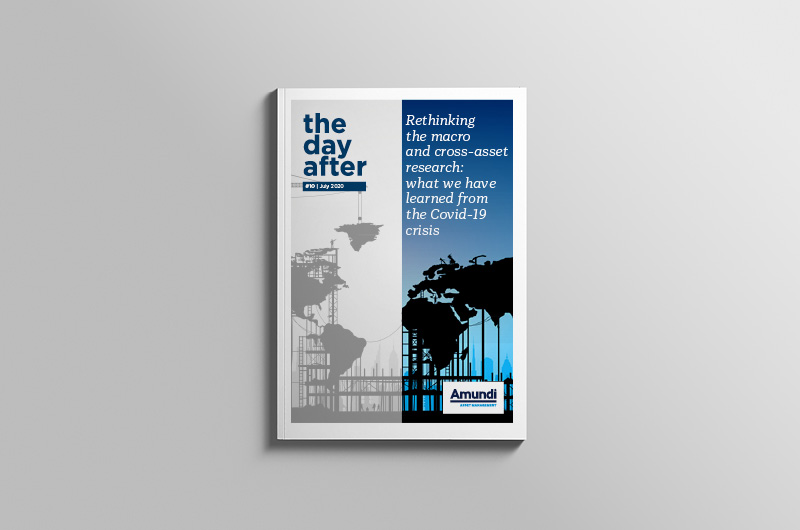The Modern Slavery Act – further sharpening the focus on “S” in ESG
The recent slavery scandal surrounding the UK-based fast-fashion brand Boohoo has further intensified the focus on the “S” element within ESG (environmental, social and governance) factors. It comes as the “S” pillar has been gaining prominence since the start of the pandemic, with increased attention on how companies treat their workers.
Boohoo came into the spotlight after the Sunday Times reported that workers at a British factory of one of the company’s suppliers were being paid less than half the minimum wage for workers over 25 years old. A separate report voiced concerns about employees in the Boohoo supply chain being exposed to risks of contracting COVID-19. Although the allegations are yet to be proven, Boohoo has been placed under investigation by the UK’s National Crime Agency for “modern slavery,” and its share price has almost halved since the Sunday Times story ran.
The Boohoo case is a timely reminder for Australian companies and investors of the risk related to modern slavery allegations and human rights abuses. The Australian Modern Slavery Act (MSA) was adopted in September 2018 and came into force on 1 January 2019. Separately, New South Wales passed a Modern Slavery Bill (MSB) in June 2018. Both laws require businesses (those with more than $100 million of revenue for the MSA, and $50 million of revenue for the MSB) to report their exposure to, and management of, modern slavery risks in their operations and supply chains, starting from 2020.
For the vast majority of entities, this means the first reporting period is between 1 July 2019 to 30 June 2020, with the first modern slavery statements initially due 31 December 2020 (this has been pushed out to end of March 2021).
What is modern slavery?
The term is broadly used to cover practices that use coercion, threats, violence, and abuse of power to exploit and deprive people of their freedom. Millions of people all over the world are victims of modern slavery practices. The International Labour Organisation (ILO) of the United Nations estimated that 40.3 million people in the world were victims of modern slavery in 2016. Of that number, approximately 25 million were in forced labour. While Australia ranks relatively well on modern slavery prevalence, the recent report published by Global Slavery Index, a global study of modern slavery published by the Minderoo Foundation’s Walk Free initiative (the Minderoo Foundation is the primary philanthropic vehicle of Fortescue Metals Group founder Andrew Forrest and his family), estimates that there were 15,000 people living in Australia in modern slavery in 2018.
Specifically, Australia’s MSA covers eight types of serious exploitation – trafficking in persons, slavery, servitude, forced marriage, forced labour, debt bondage, deceptive recruiting for labour or services, and the worst forms of child labour.
Australian companies have a high exposure to the risk of modern slavery. Their supply chains are often closely linked to businesses in the Asia-Pacific region, where more than half of modern slavery victims are believed to been located. The Global Slavery index lists electronics, garments, fish, rice and cocoa as the five top products at risk of involvement in modern slavery. Other high-risk industries include mining, construction and building materials.
Domestically, the Australian horticultural sector is one of the most at-risk industries for modern slavery. Based on a survey of 655 farms, a report released by the National Union of Workers (NUW) in July 2019 found persistent and widespread labour abuses in the Australian horticultural industry with underpayments, excessive overtime, threats of (and actual) physical and sexual violence being reported.
Industries using subcontracting, the ones that compete on price featuring highly transactional buyer-supplier relationships are also prone to modern slavery risks. With global supply chains reaching across sectors and resulting in increased use of subcontracting in foreign jurisdictions, the practice of slavery can be difficult to detect even when suppliers have been audited.
To guide companies and investors on Modern Slavery reporting, the Australian Council of Superannuation Investors (ACSI) has identified four key modern slavery risk factors: vulnerable population (migrant workers, base skilled workers, minorities, etc); business models structured around high-risk work practices (outsourcing, seasonal demand peak, franchises, etc); high-risk product and service categories (raw materials, services procurement, etc); and high-risk geographies (conflict-affected zones, weak rule of law, high corruption, etc).
While the MSA sets out certain criteria that need to be included in a modern slavery statement, it allows flexibility for reporting entities to tailor an approach that is appropriate to them. Reports will be made public via an online database, and the Government has the power to publicly name entities that fail to comply, and has authority to take remedial action.
It is clear that the Modern Slavery Act reporting is not just an ethical issue; nor is it about meeting a legal requirement.
The reports will provide investors with an insight about how companies manage the risk in their operations and supply chain. It might also shed some light on robustness of a company’s business model. Any company perceived to rely on underpaid workers or to be exposed to slavery issues will be examined for the sustainability of its revenues and earnings.
In the case of the Boohoo scandal, this was perfectly summed up by Holly Mackay, chief executive officer of UK-based plain-English finance website Boring Money, who commented: “I can’t believe that these allegations came as a surprise to anyone who has scrutinised the firm in any detail. You don’t need to be a genius to work out that you can’t sell dresses for £15 and treat everyone in that supply chain nicely.”









